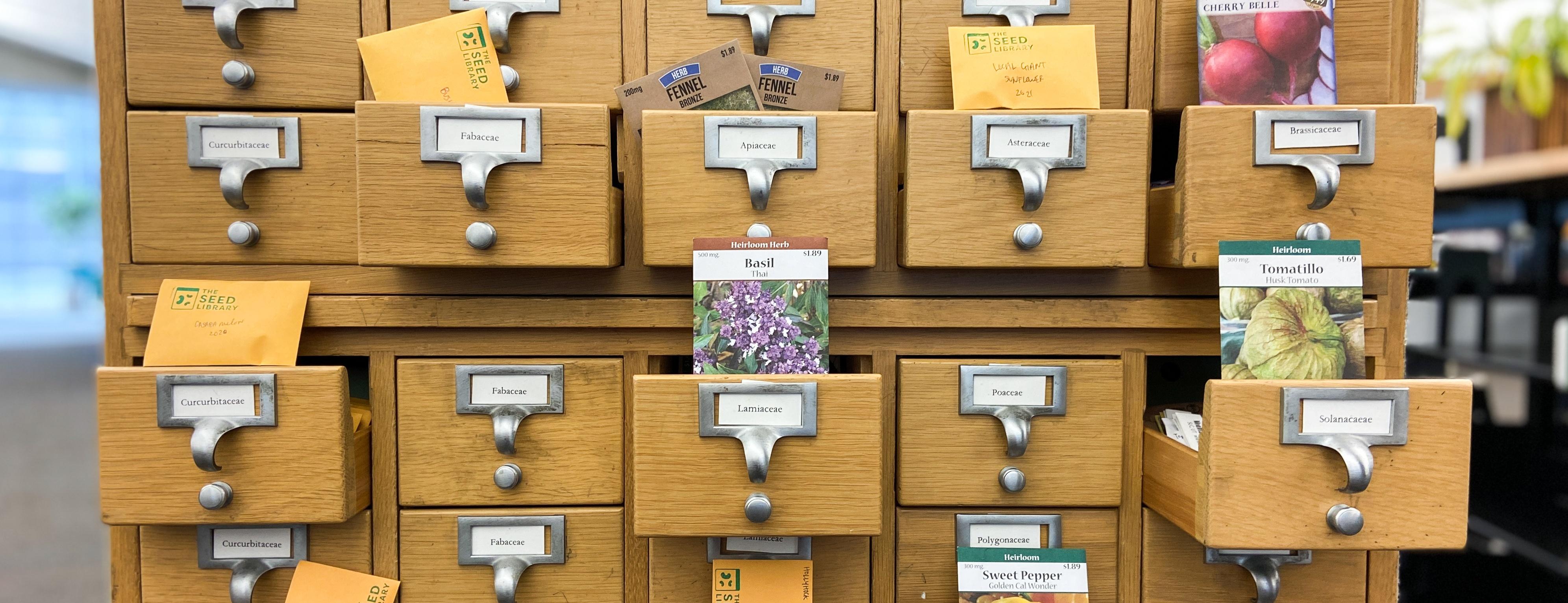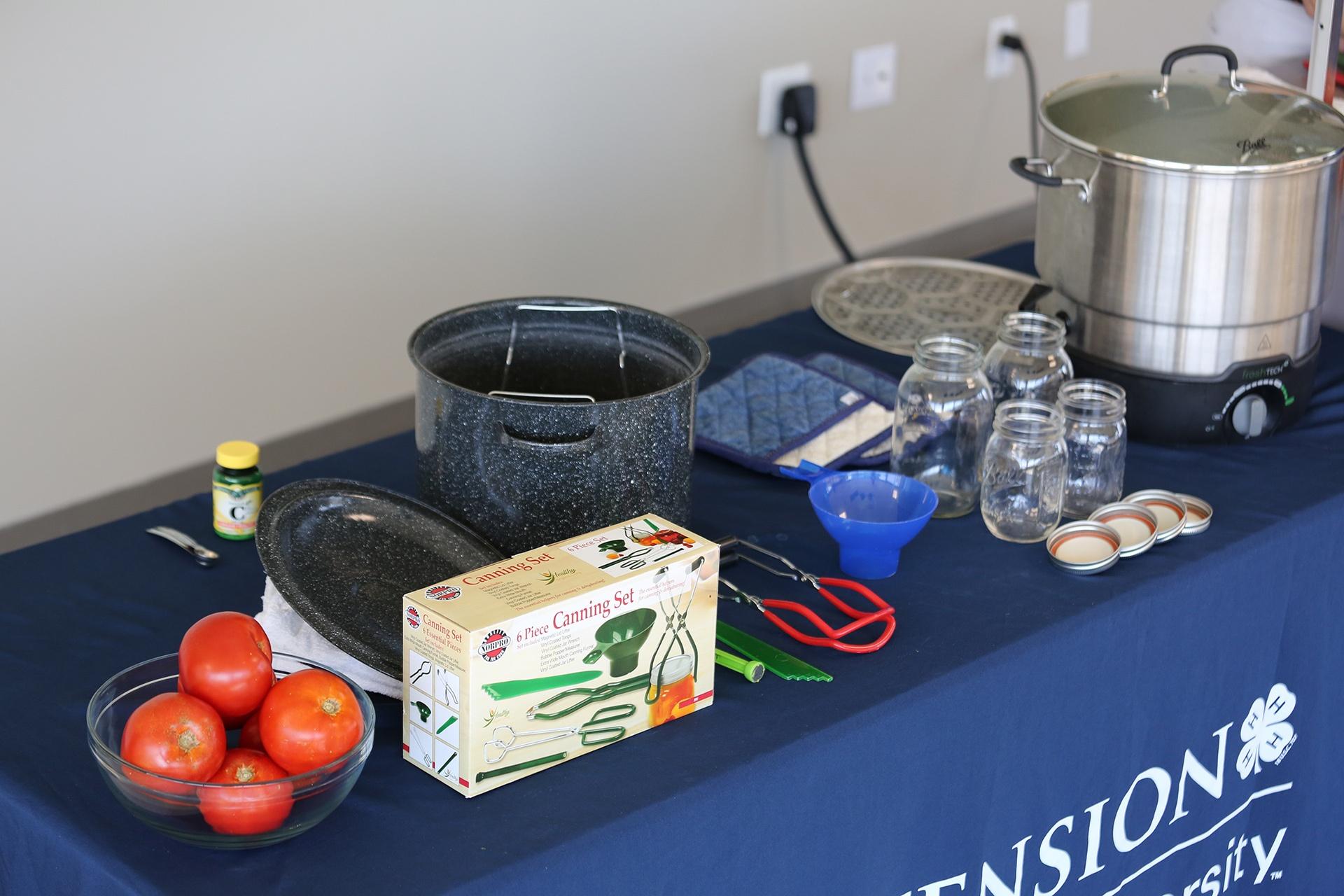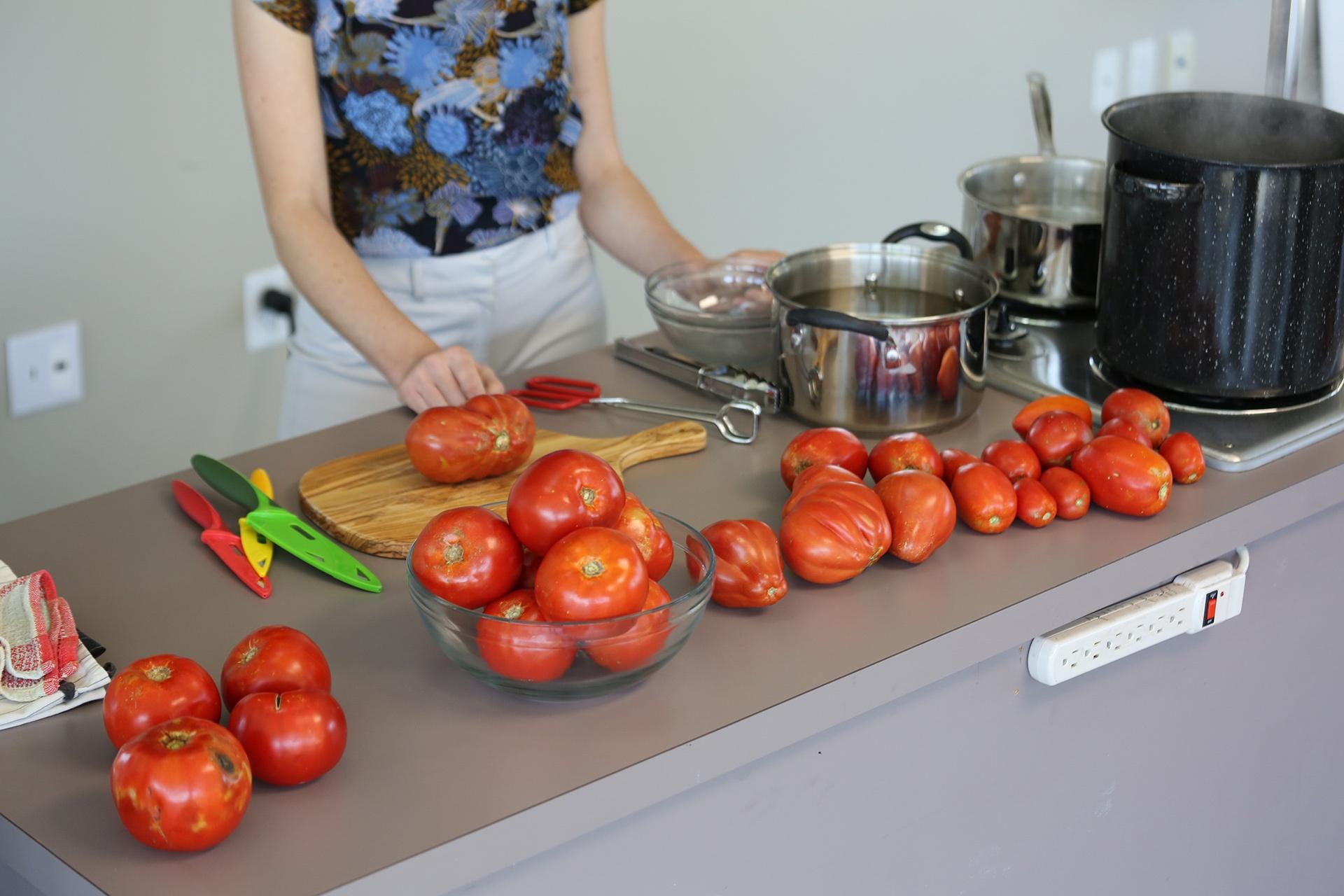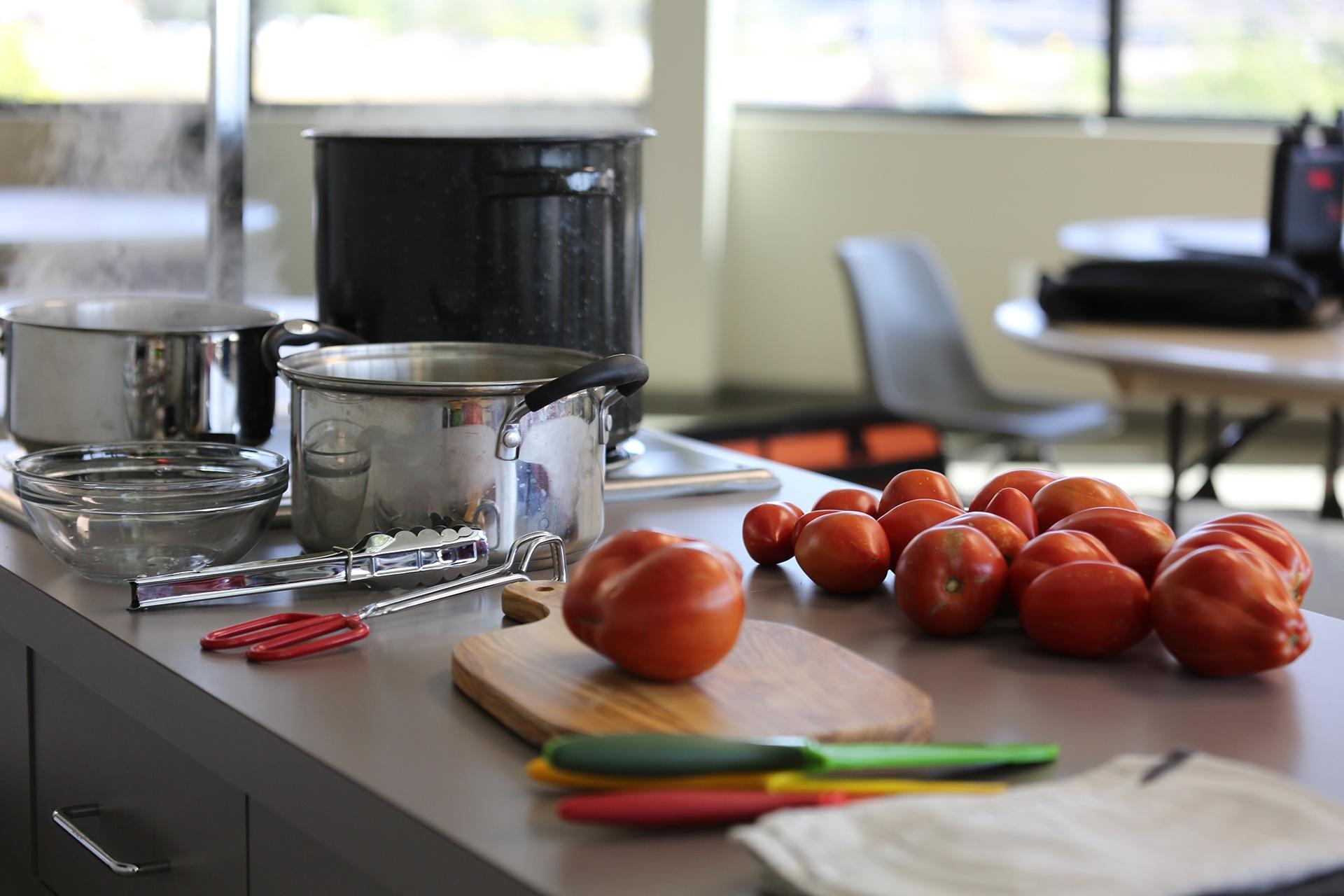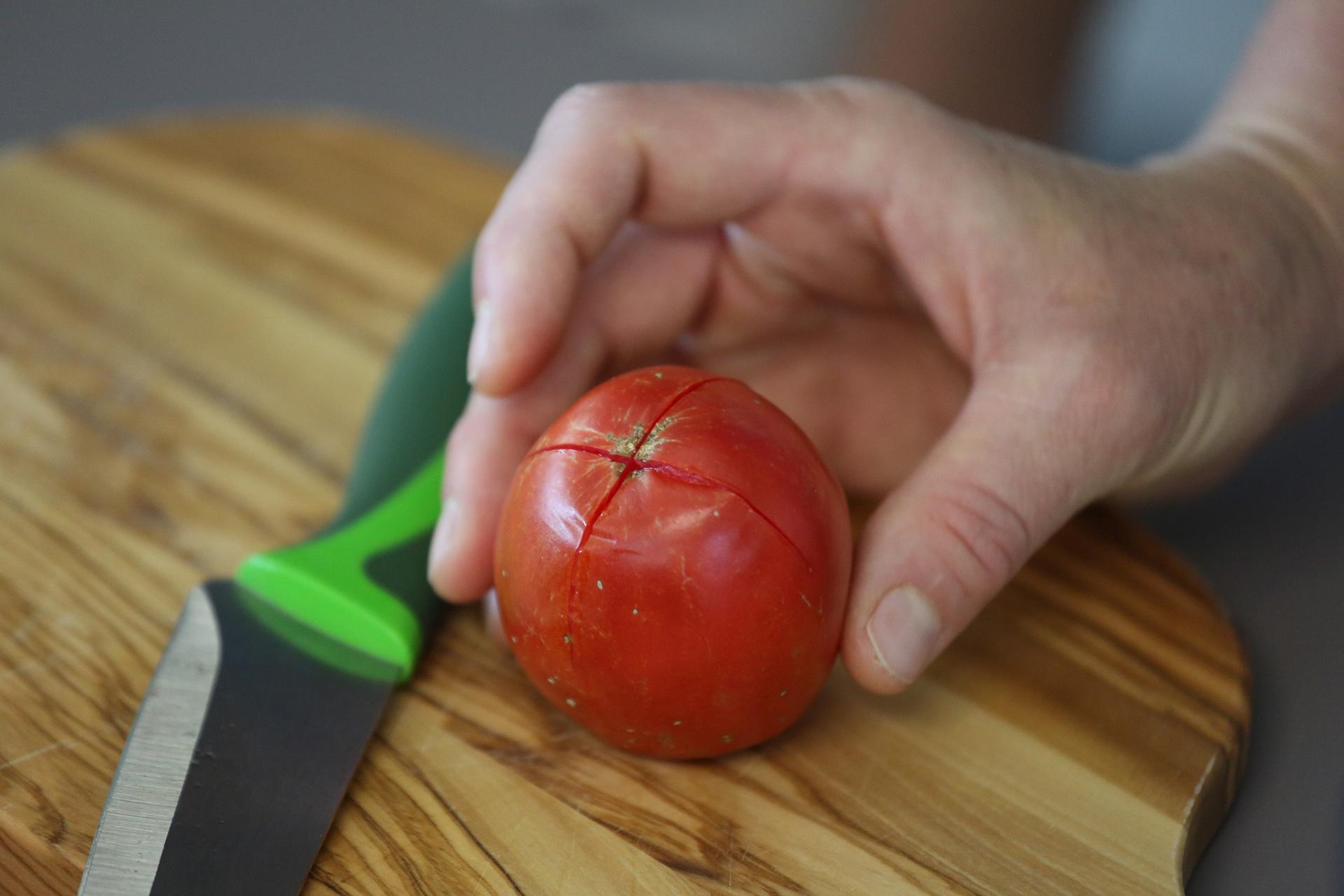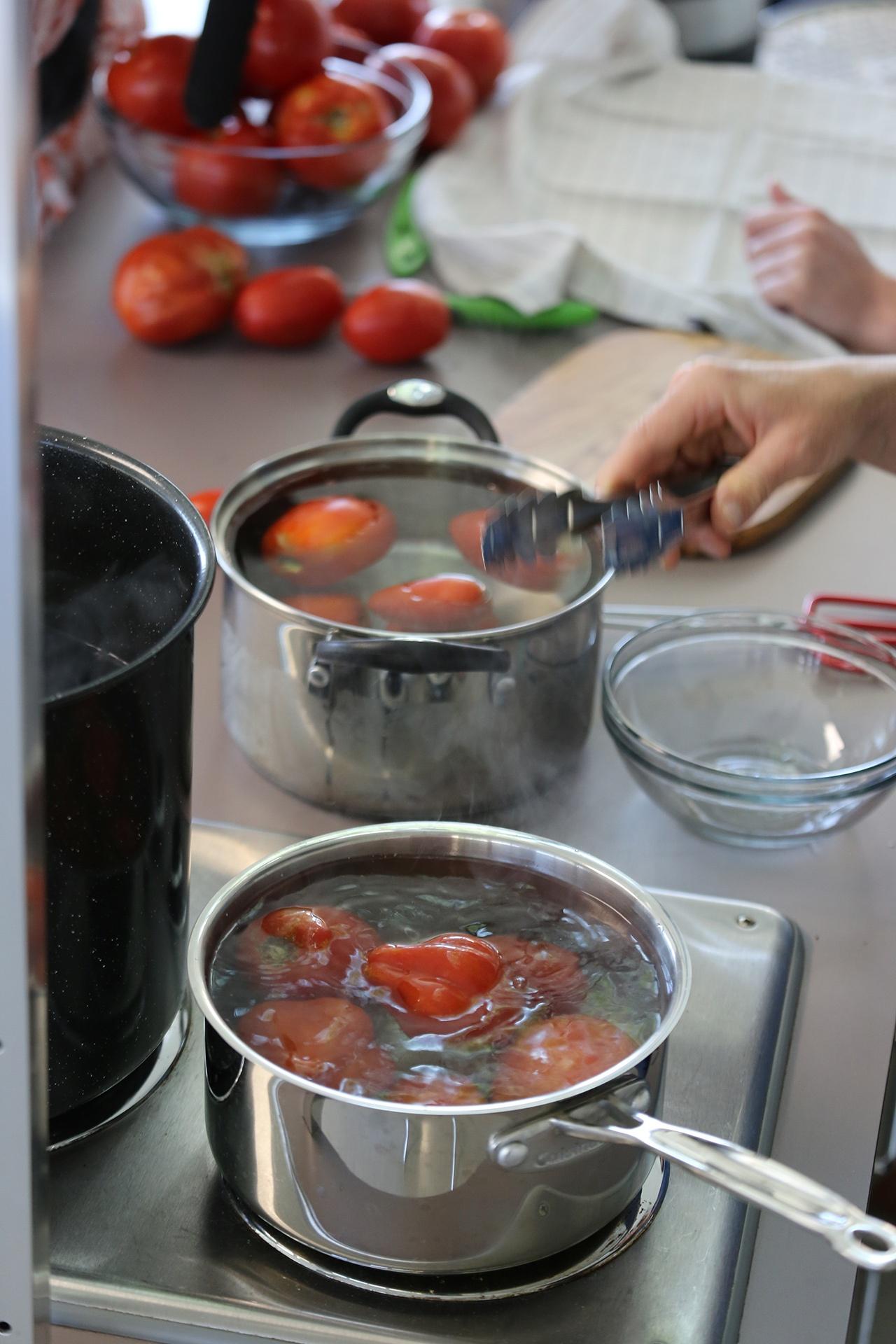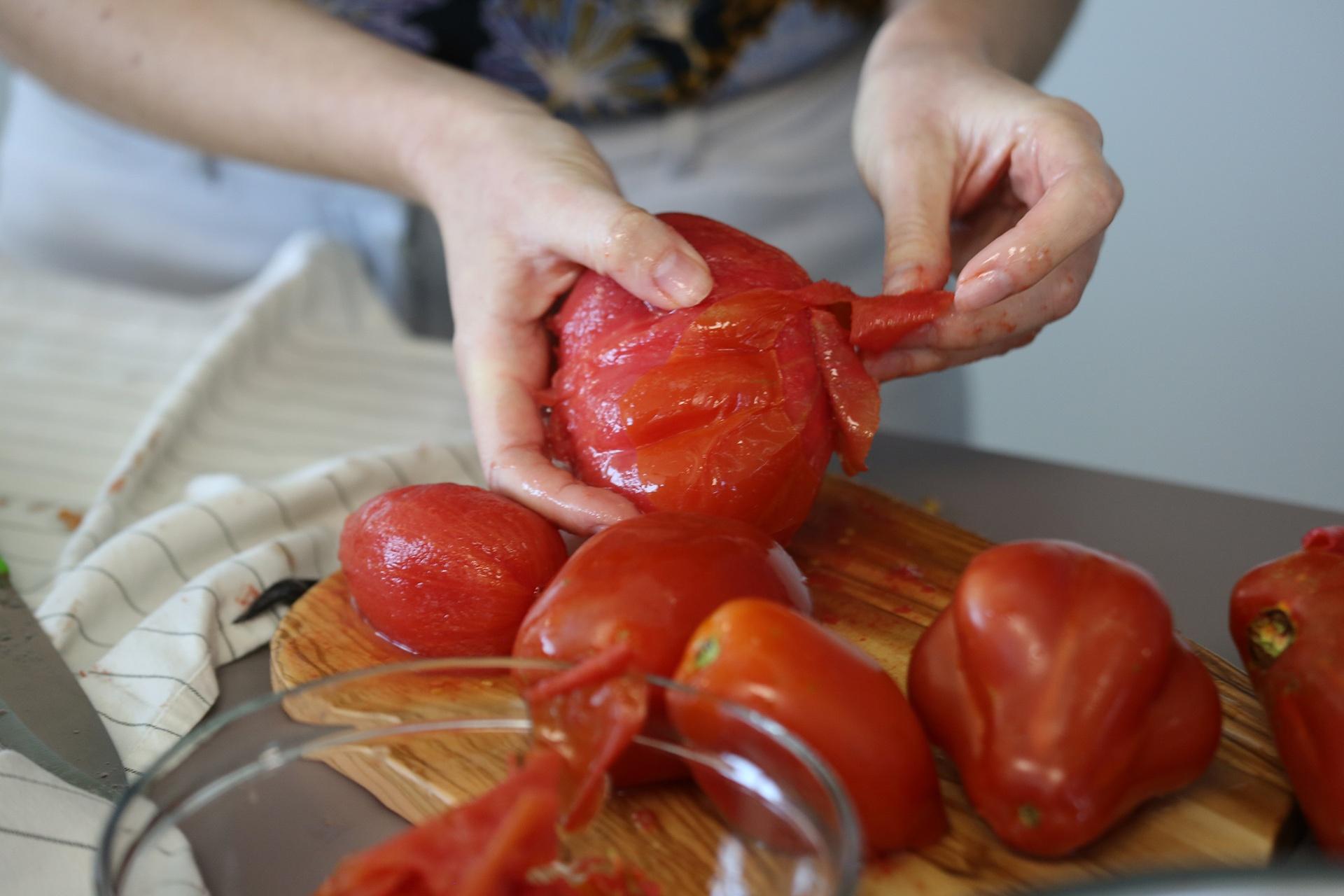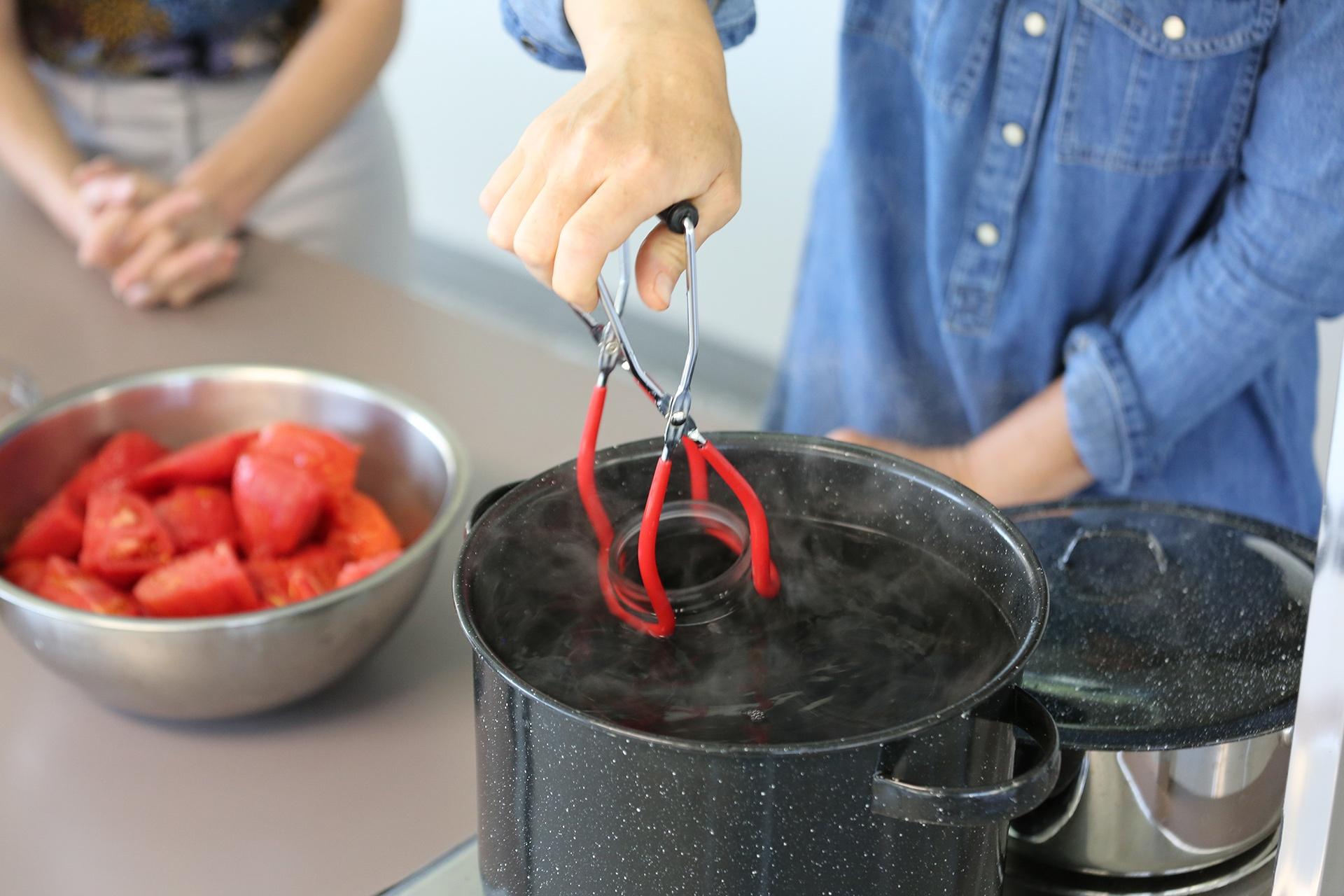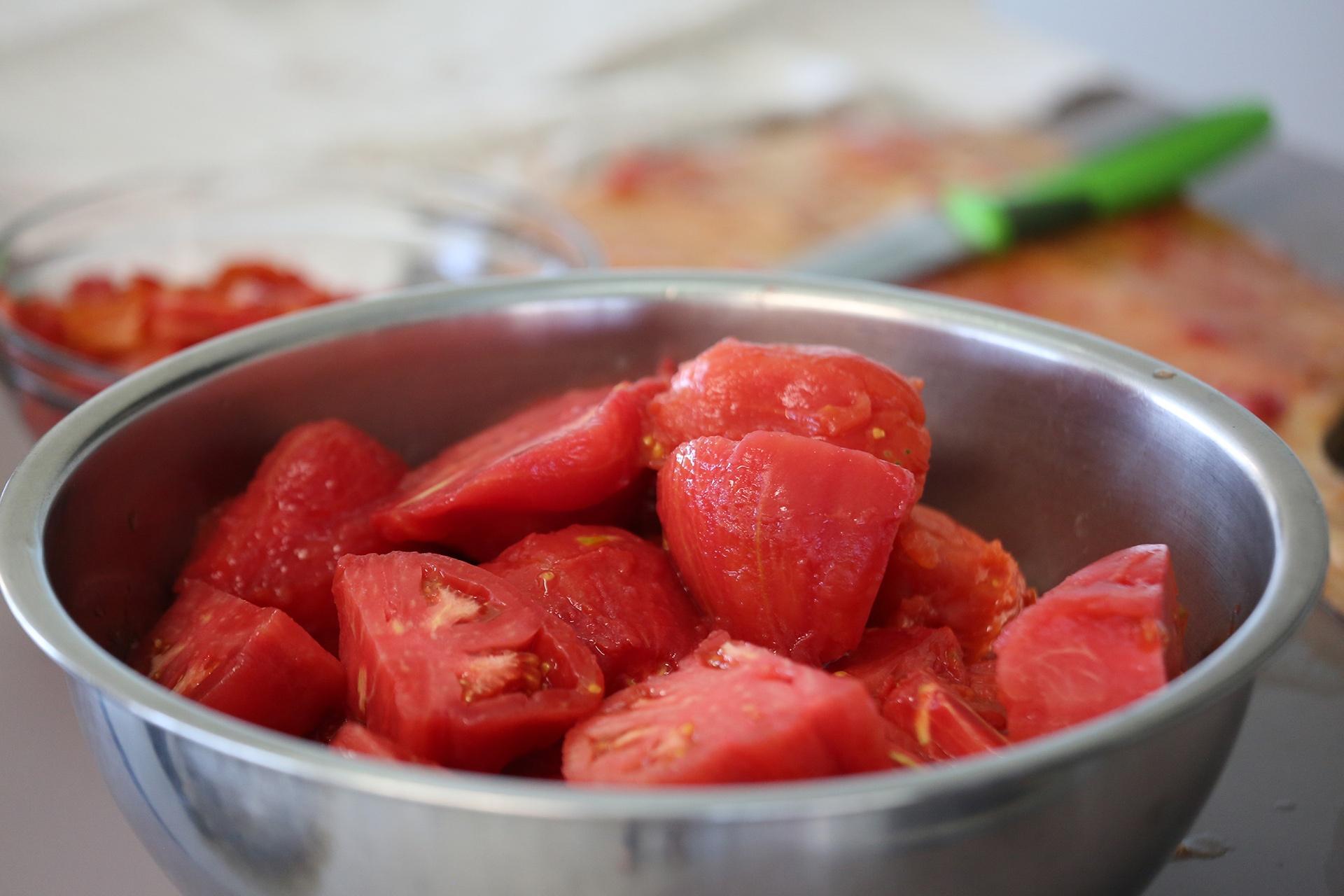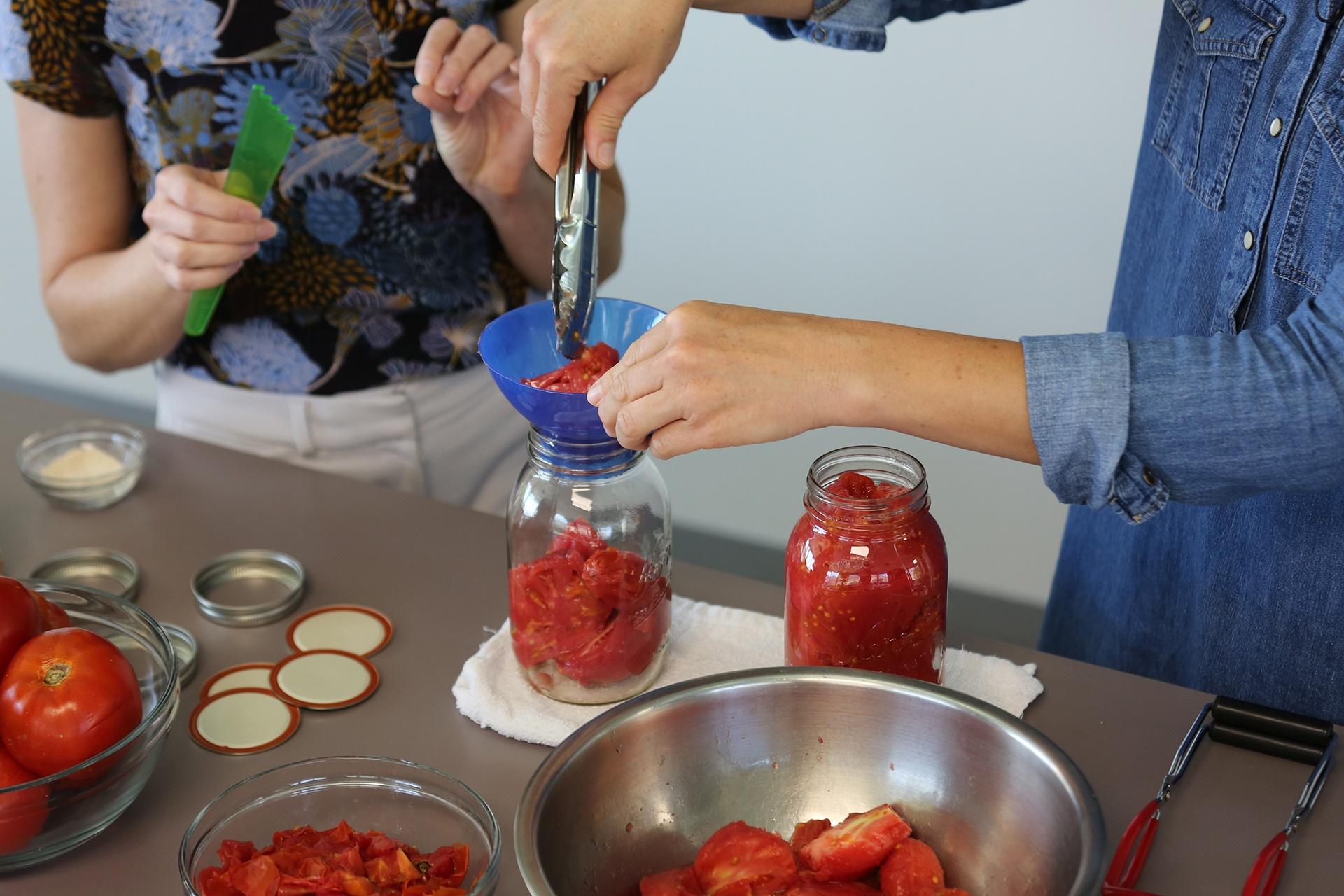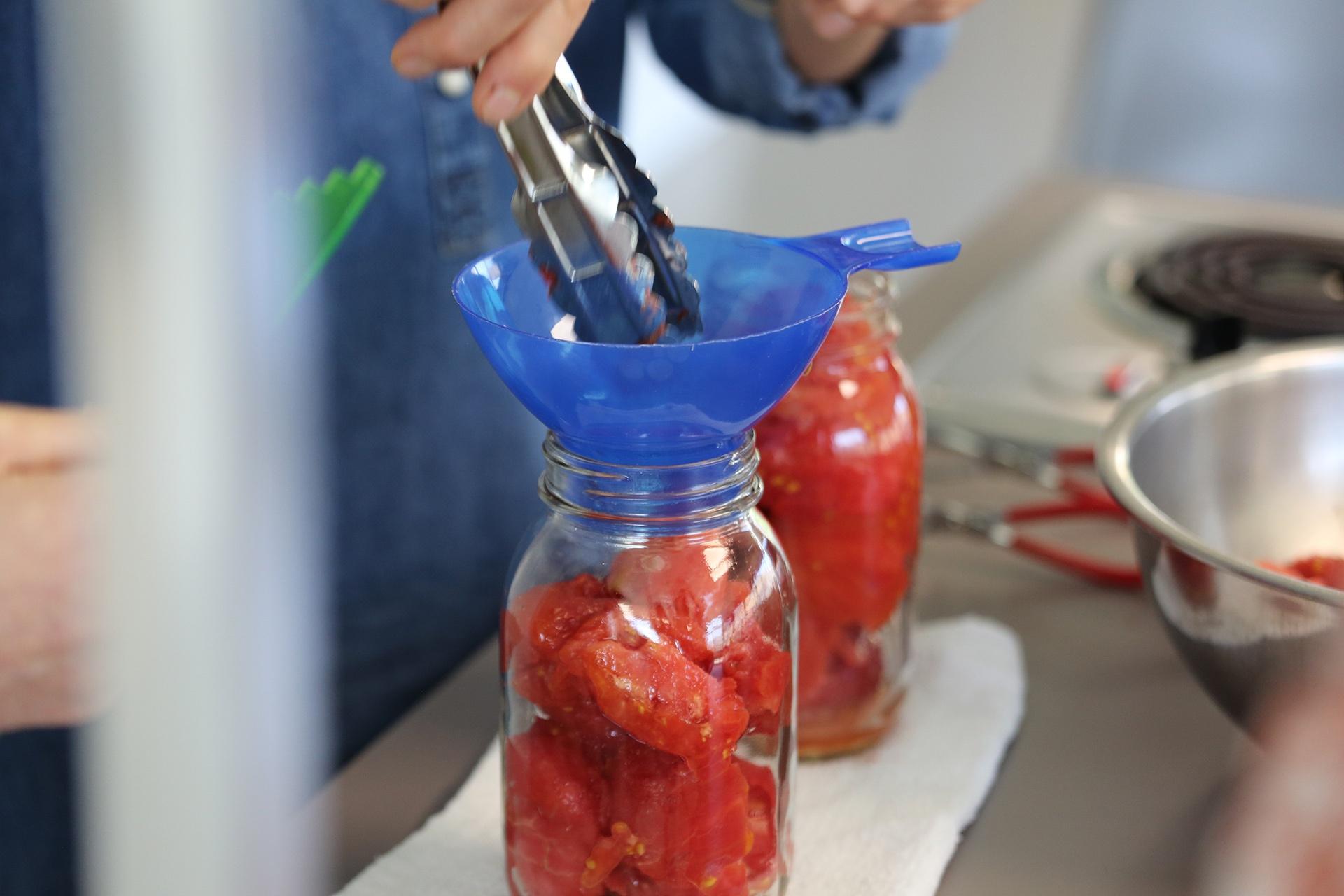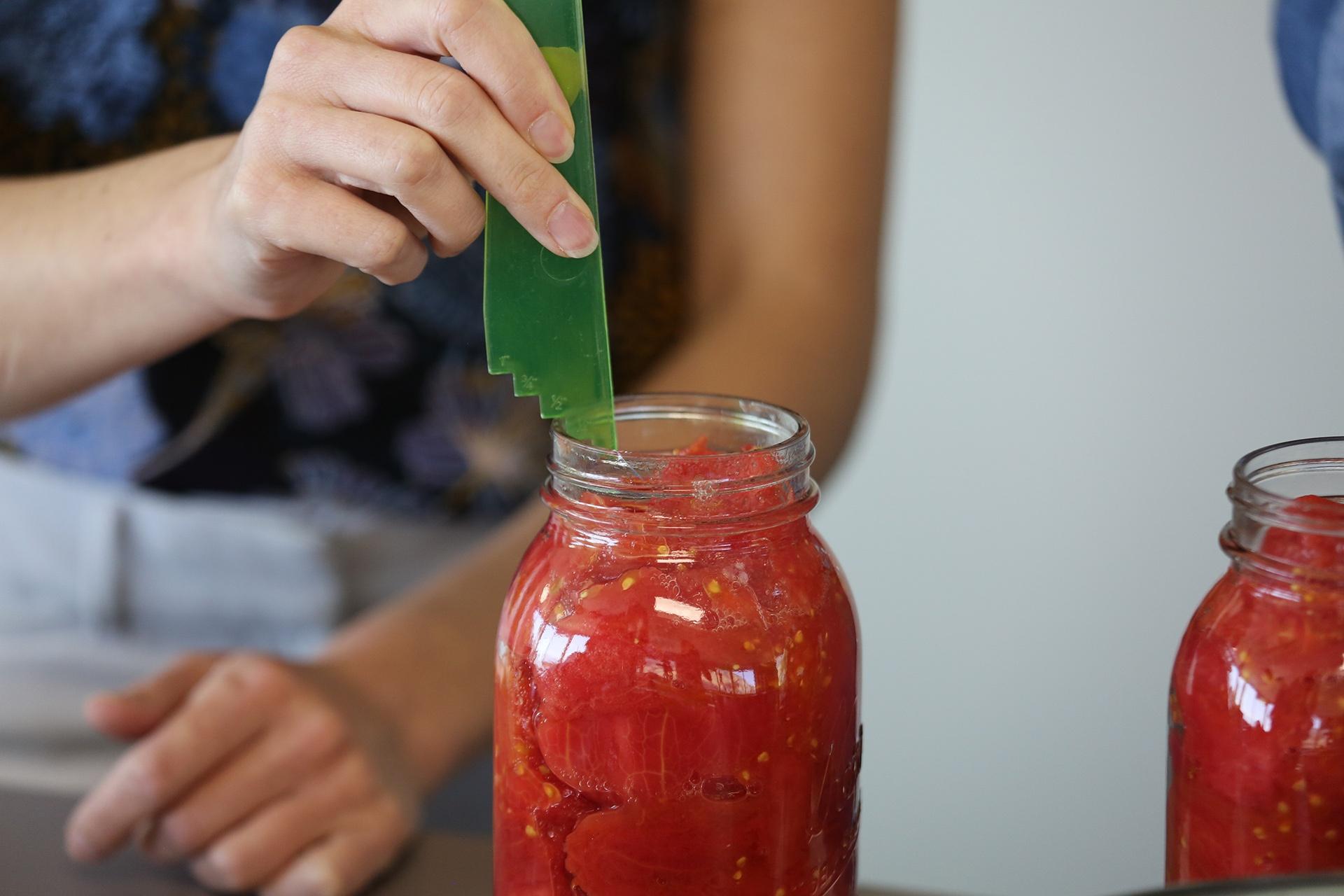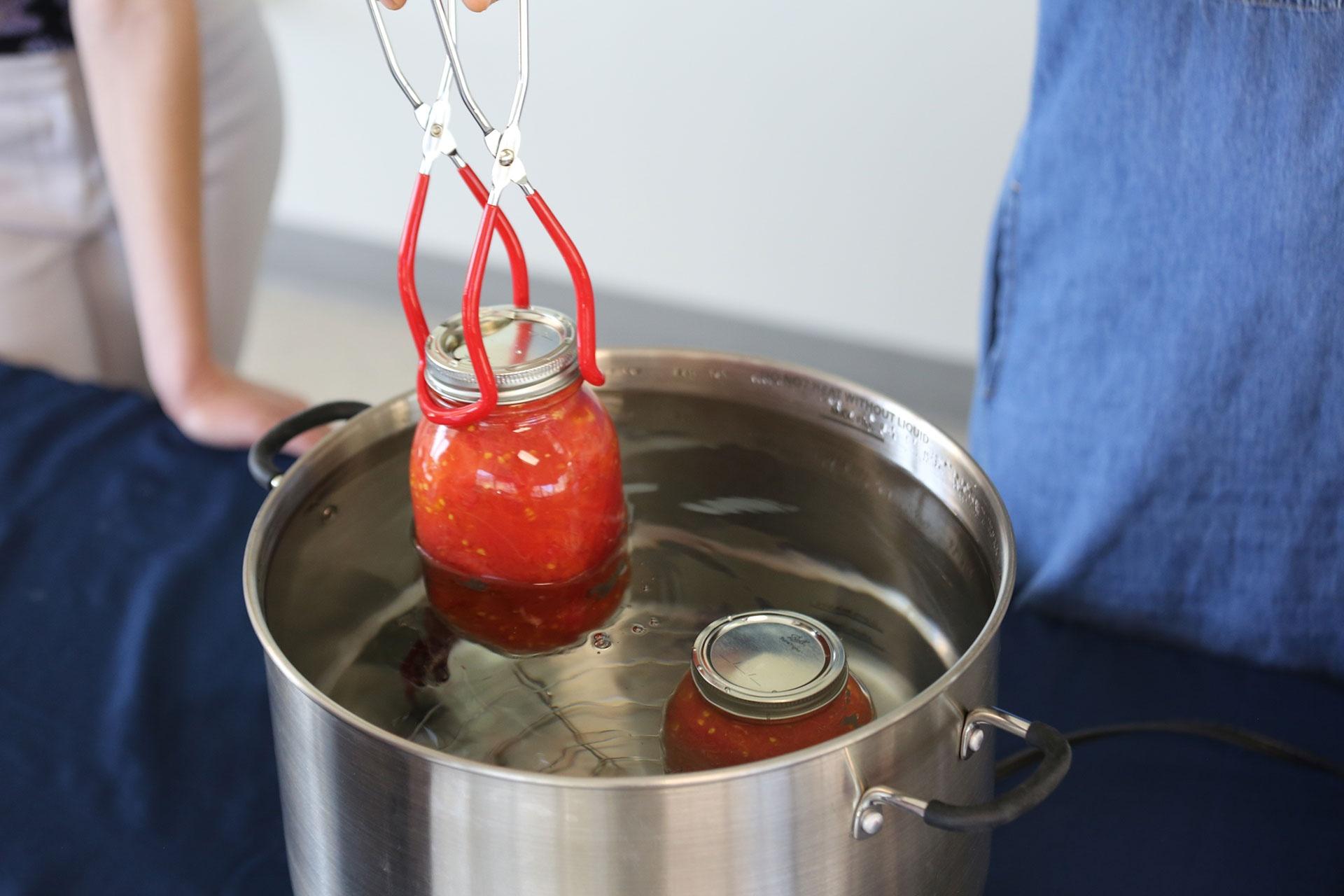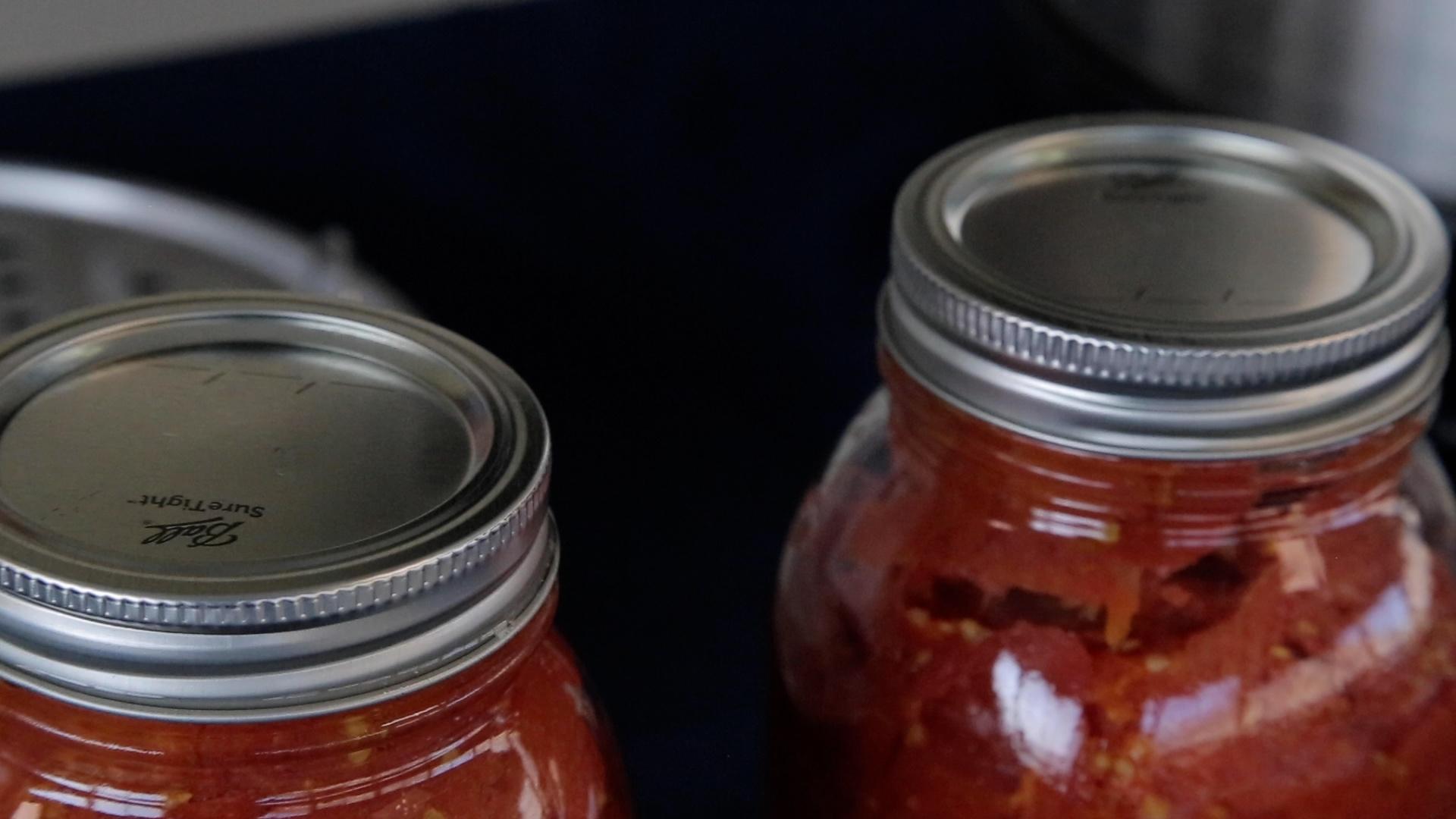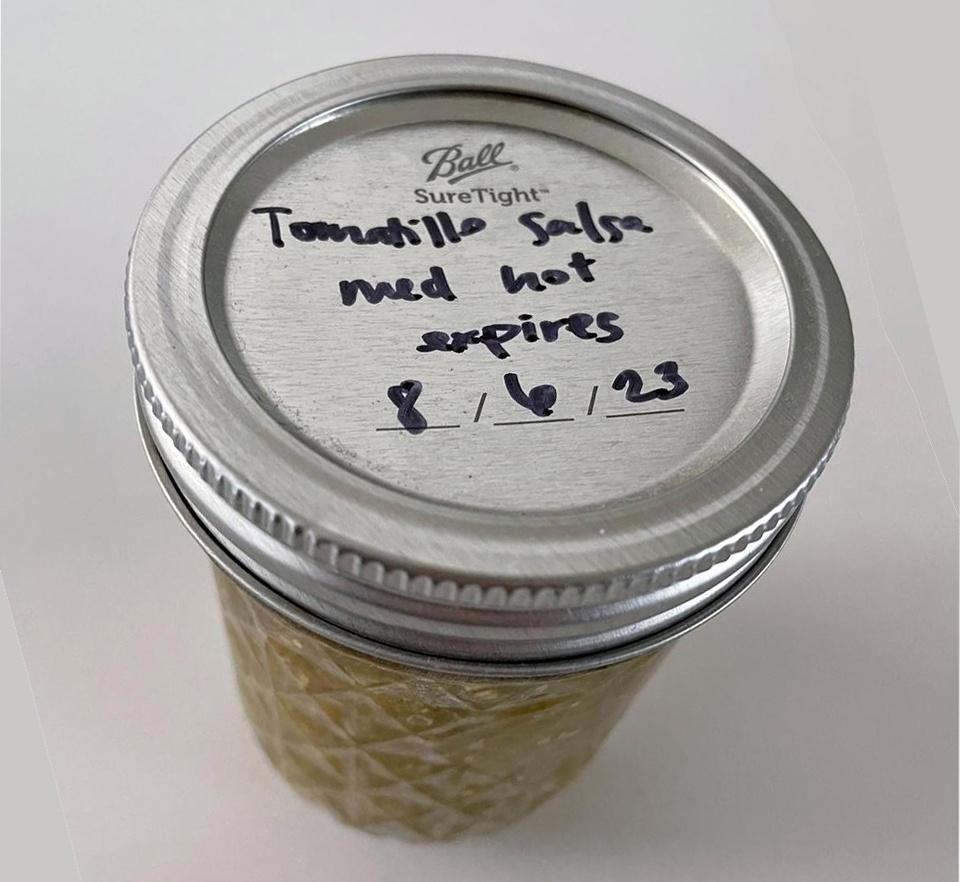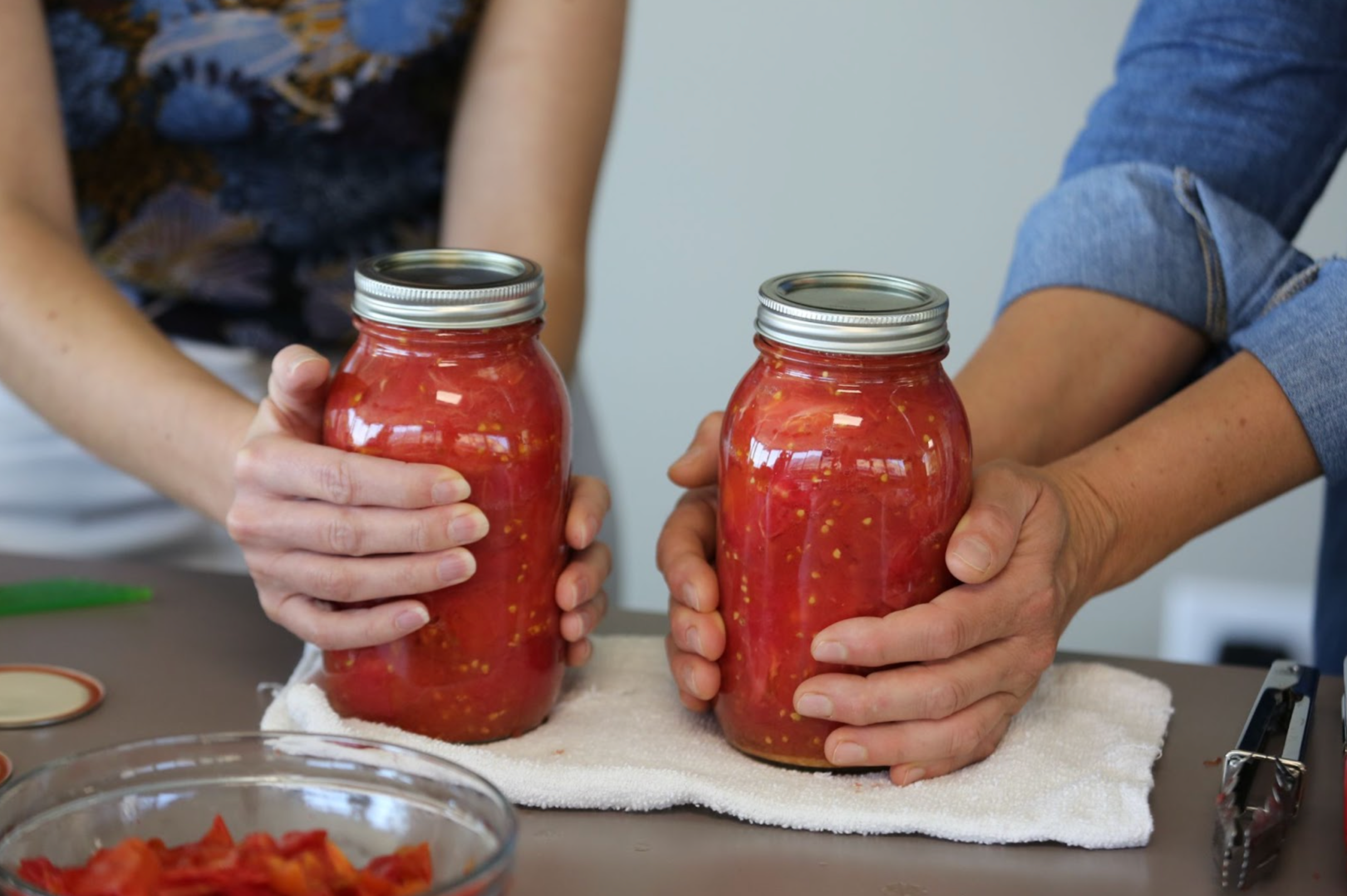We’ve all seen gardeners’ prized harvest photos on social media, usually a kitchen table or counter top overflowing with harvest bounty. What do you do with all the tomatoes you’ve spent all season growing to perfection? Canning is a sure answer. By canning your tomatoes you can enjoy them throughout the winter months with your favorite stews, soups, steaming casseroles, or marinara recipe. We met with canning expert and teacher Cindy Jenkins to walk us through the step-by-step process of canning tomatoes using the water bath method.
In this blog post we’ll show you:
- What tools you’ll need for canning tomatoes
- Which tomato types are best suited for canning
- How to prepare and peel your tomatoes for canning
- Steps to take to fill your jars
- How to properly seal your tomato jars, and best storing practices.
Cindy also shares with us some important caning tips and noteworthy canning tricks along the way.
Enjoy Your Tomatoes All Year!
It’s harvest season and suddenly it feels like everything is coming on at once. Trying to figure out what to do with all your produce without letting it go to waste can feel a bit overwhelming. Canning your tomatoes is a sure way to get the most out of your harvest and enjoy your tomatoes all year long. We met with canning expert Cindy Jenkins in Orem, Utah. She's an Assistant Professor of Home and Community at Utah State University Extension and showed us how to properly can tomatoes.
